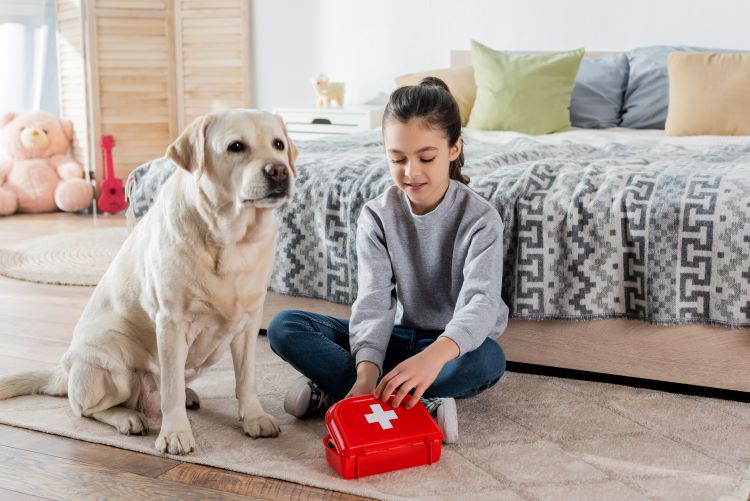When it comes to our furry family members, ensuring their safety and well-being is a top priority for every pet owner. While we all hope never to face an emergency situation with our pets, accidents can happen. Being prepared with basic first aid knowledge can make a significant difference in managing a pet’s injury or illness until professional veterinary care can be obtained. Here are some essential tips on first aid for pets that every pet owner should know.
Basic First Aid for Pets
1. Create a Pet First Aid Kit
Just as every home should have a first aid kit for humans, it’s crucial to have one ready for your pets. Essential items include gauze pads and rolls, adhesive tape, cotton balls, tweezers, scissors, digital thermometer, saline solution, and a pet carrier. Also, include a card with your veterinarian’s contact information, the nearest emergency vet clinic, and the number for a pet poison helpline.
2. Know How to Handle Bleeding
If your pet is bleeding, your first step is to apply direct pressure to the wound with a clean gauze pad. If the bleeding is severe and doesn’t stop, elevate the wound while continuing to apply pressure. It’s crucial to get your pet to a veterinarian as soon as possible if the bleeding doesn’t subside.
3. Managing Choking
If you suspect your pet is choking, be cautious — a choking animal can unintentionally bite in panic. Look inside your pet’s mouth for foreign objects and try to remove them gently with tweezers. If you can’t dislodge the object easily, don’t waste time; rush your pet to the vet. Learning the Heimlich maneuver for pets is also a valuable skill.
4. Dealing with Broken Bones
If your pet has a broken bone, it’s essential to immobilize the injured part without trying to set the bone yourself. Use a makeshift splint, but only if you can do so without causing more pain. Transport your pet to the vet carefully, minimizing movement.
5. Recognizing Heatstroke
Heatstroke is a common issue, especially during hot weather. Signs include heavy panting, drooling, rapid heartbeat, and lethargy. If you suspect heatstroke, move your pet to a cool area immediately and apply cool (not cold) water to help lower their body temperature. Offer small amounts of water to drink and contact your vet right away.
6. CPR for Pets
Knowing how to perform CPR on your pet can be life-saving. The process is similar to human CPR but tailored to the size and anatomy of your pet. It involves checking for responsiveness, clearing the airway, and performing chest compressions and rescue breaths. Consider taking a pet CPR and first aid course to ensure you’re prepared.
7. Poisoning
If you suspect your pet has ingested something toxic, do not induce vomiting unless instructed by a vet or poison control. Have the substance on hand when you contact a professional, as they will need to know what your pet has ingested to provide proper guidance.
8. Preventing Shock
Shock can occur in pets due to trauma, blood loss, or severe allergic reactions. Signs include weak pulse, shallow breathing, and lethargy. Keep your pet warm and calm, and get to a vet immediately. Do not offer food or water as it may cause vomiting.
9. Seizures
During a seizure, keep your pet away from any objects that could cause injury. Do not try to restrain your pet or put anything in their mouth. Time the seizure, and once it has stopped, keep your pet warm and quiet. Contact your vet for further advice.
10. Emergency Vet Visit
In any emergency, after providing first aid, a visit to the vet is often necessary. Keep your pet calm and restrained during transport to prevent further injury. Faithful Friends offers options for emergency visits after hours.
Stay Safe & Be Prepared
While first aid can be crucial in an emergency, it’s not a substitute for veterinary care. These tips are meant to stabilize your pet until you can get professional help. Being prepared, staying calm, and acting quickly are key components of effectively managing a pet emergency. Remember, the best way to deal with emergencies is to prevent them, so always keep an eye on your pet’s environment for potential hazards.




